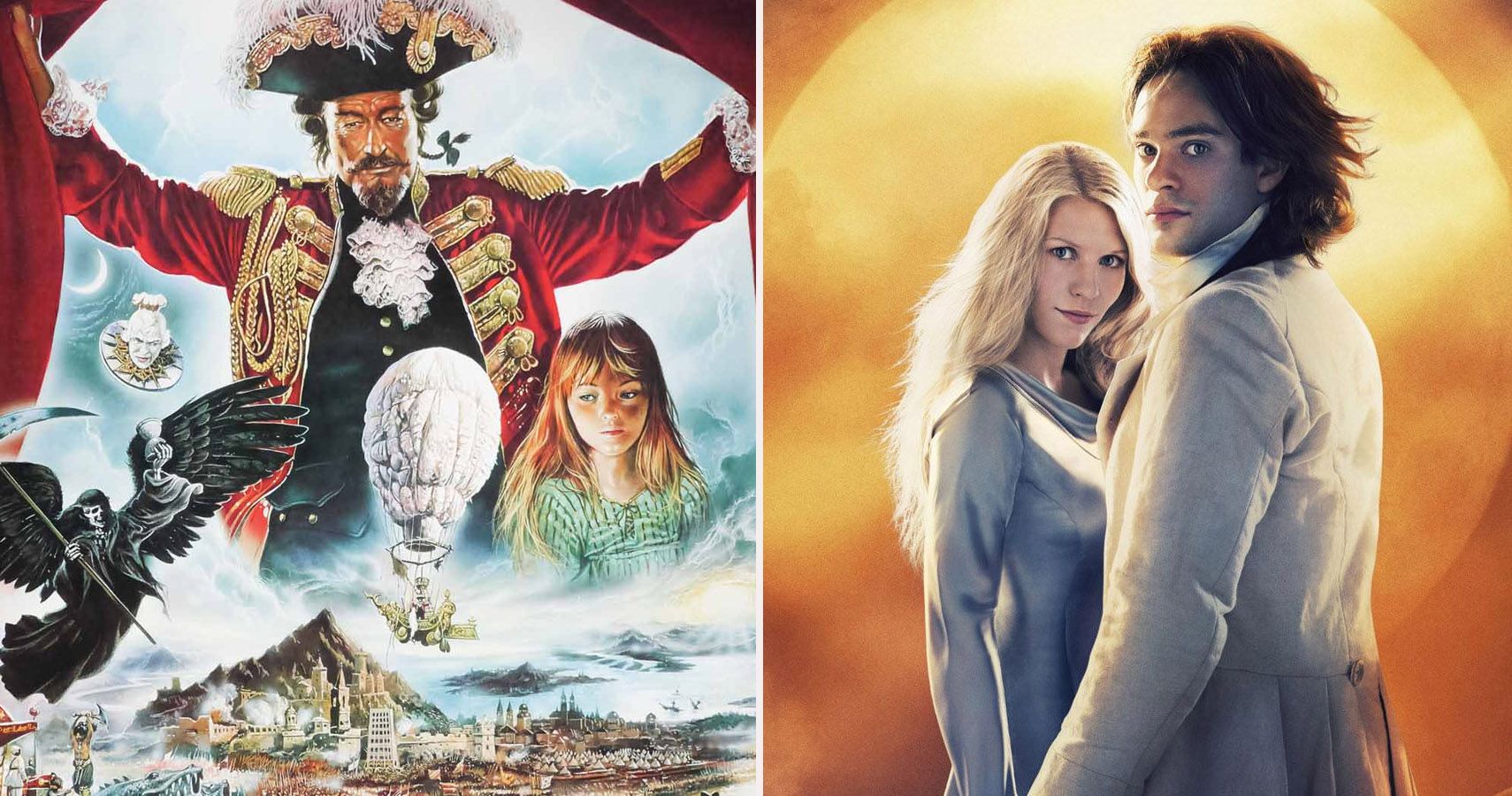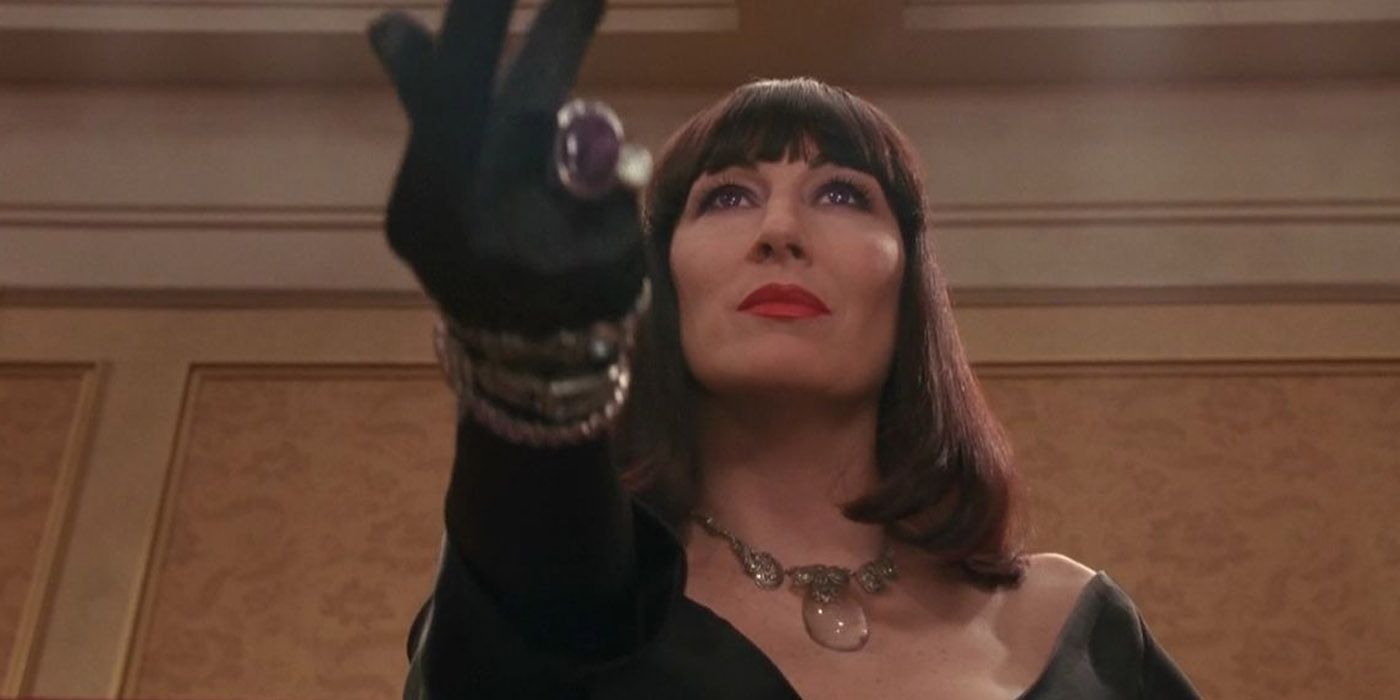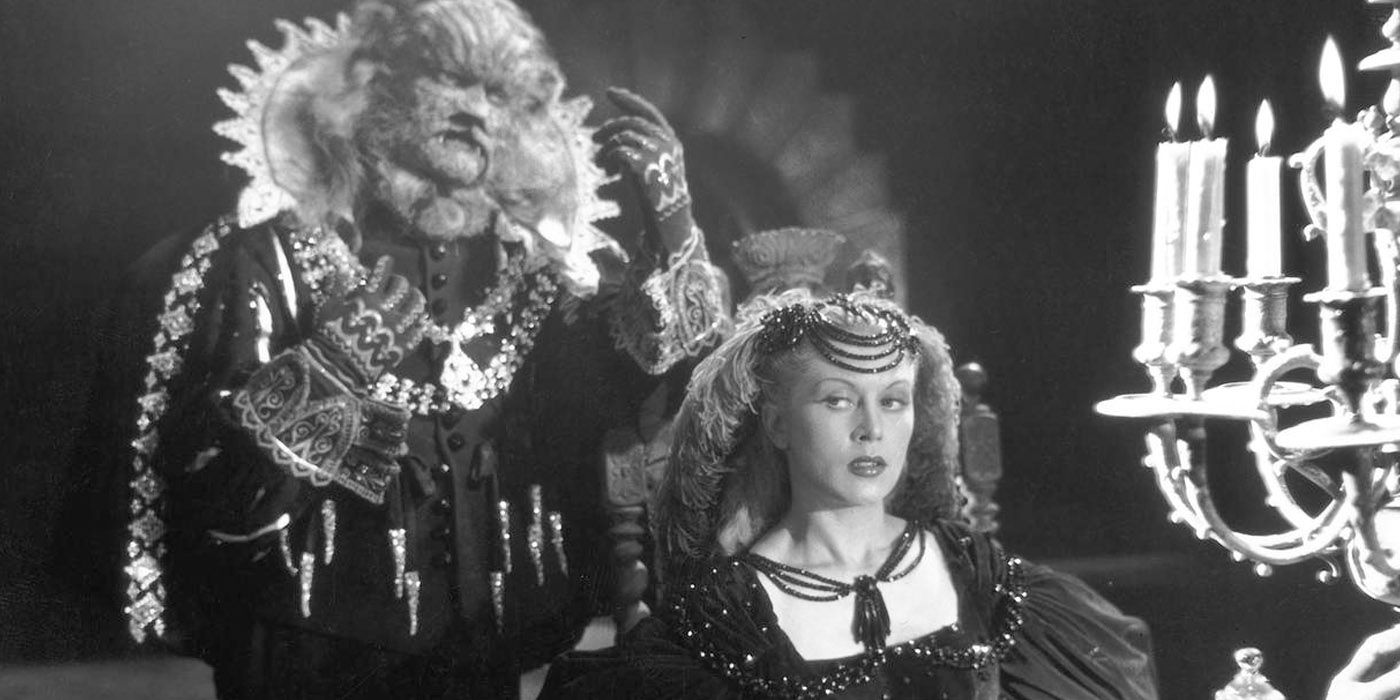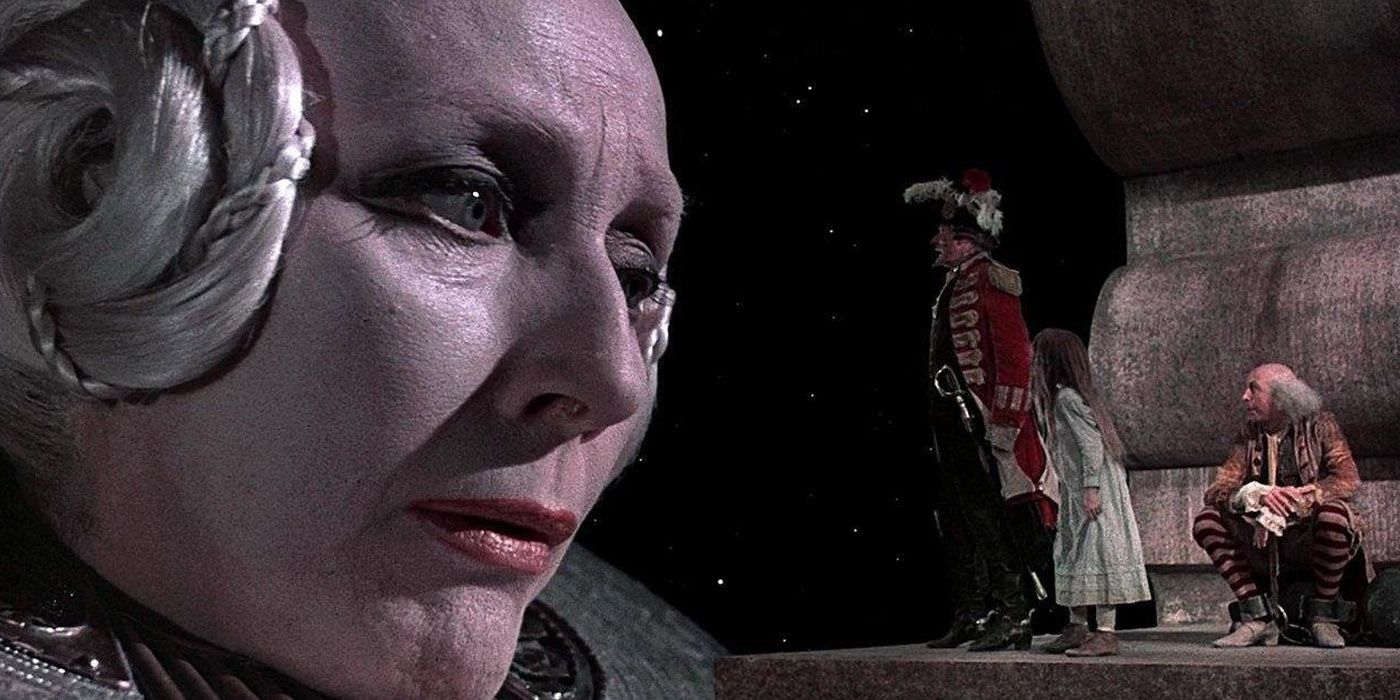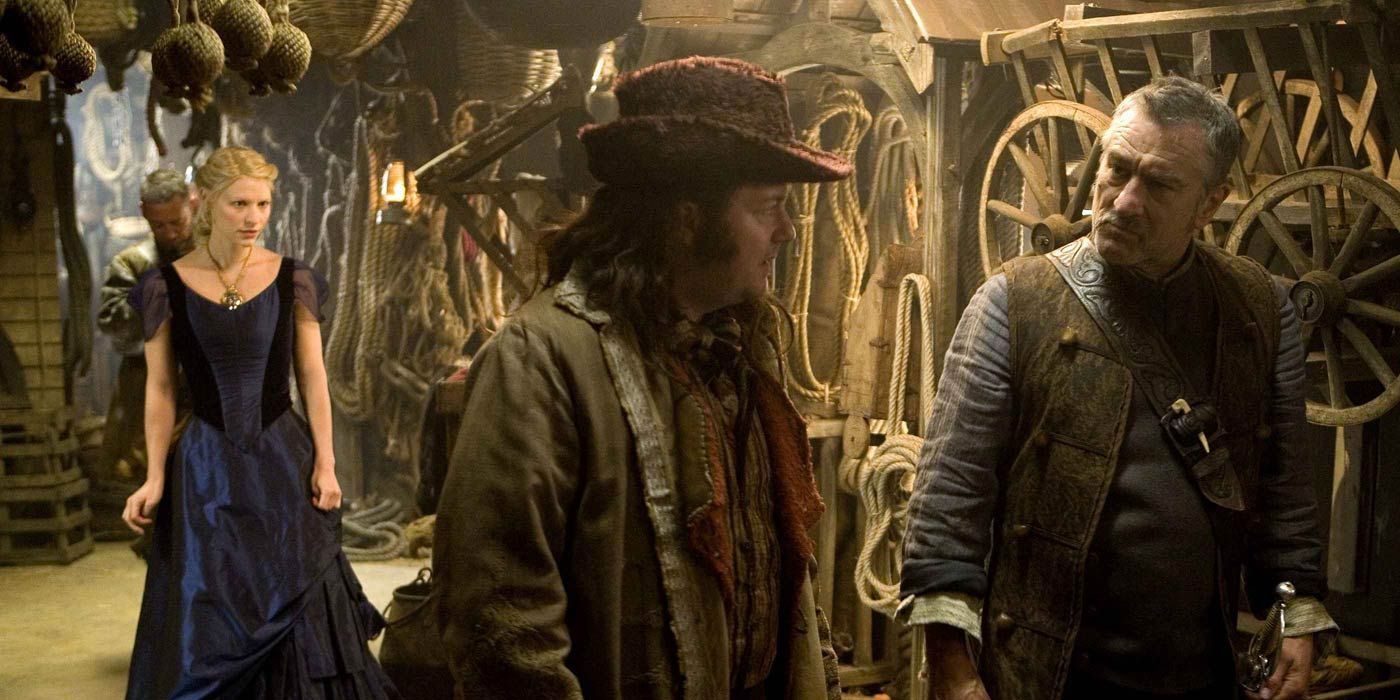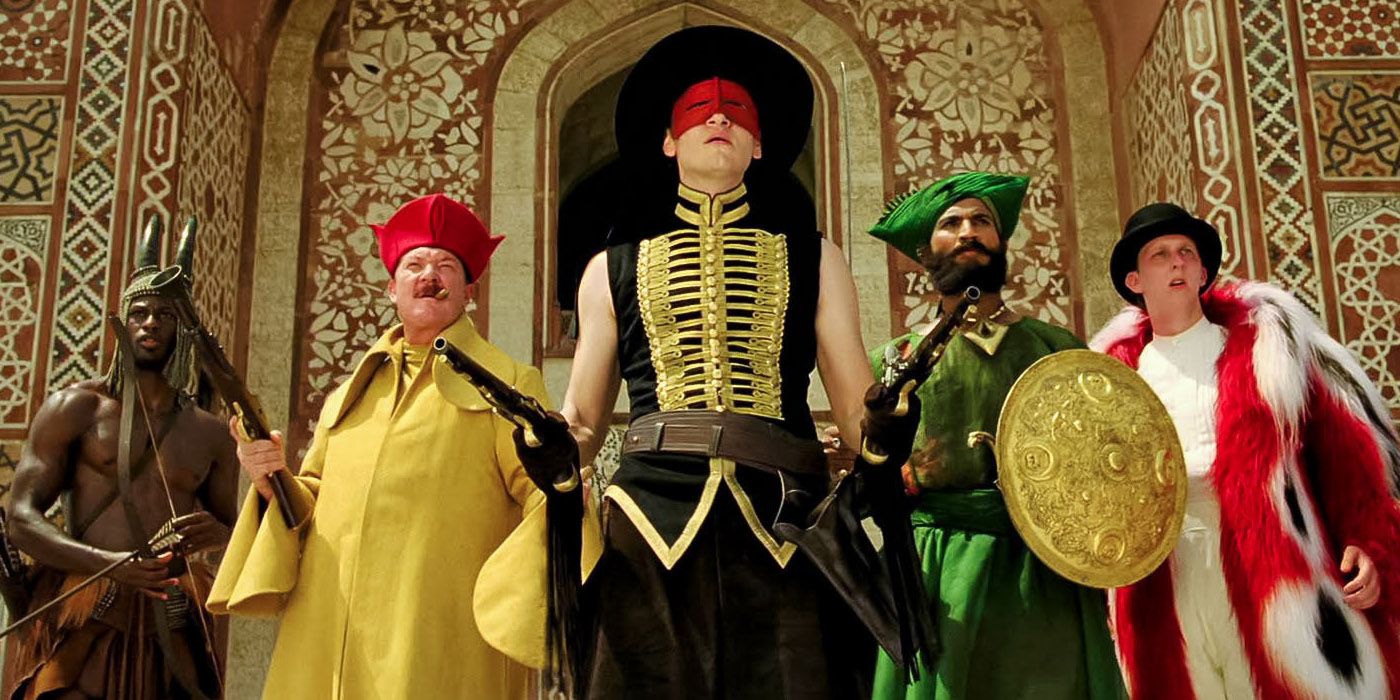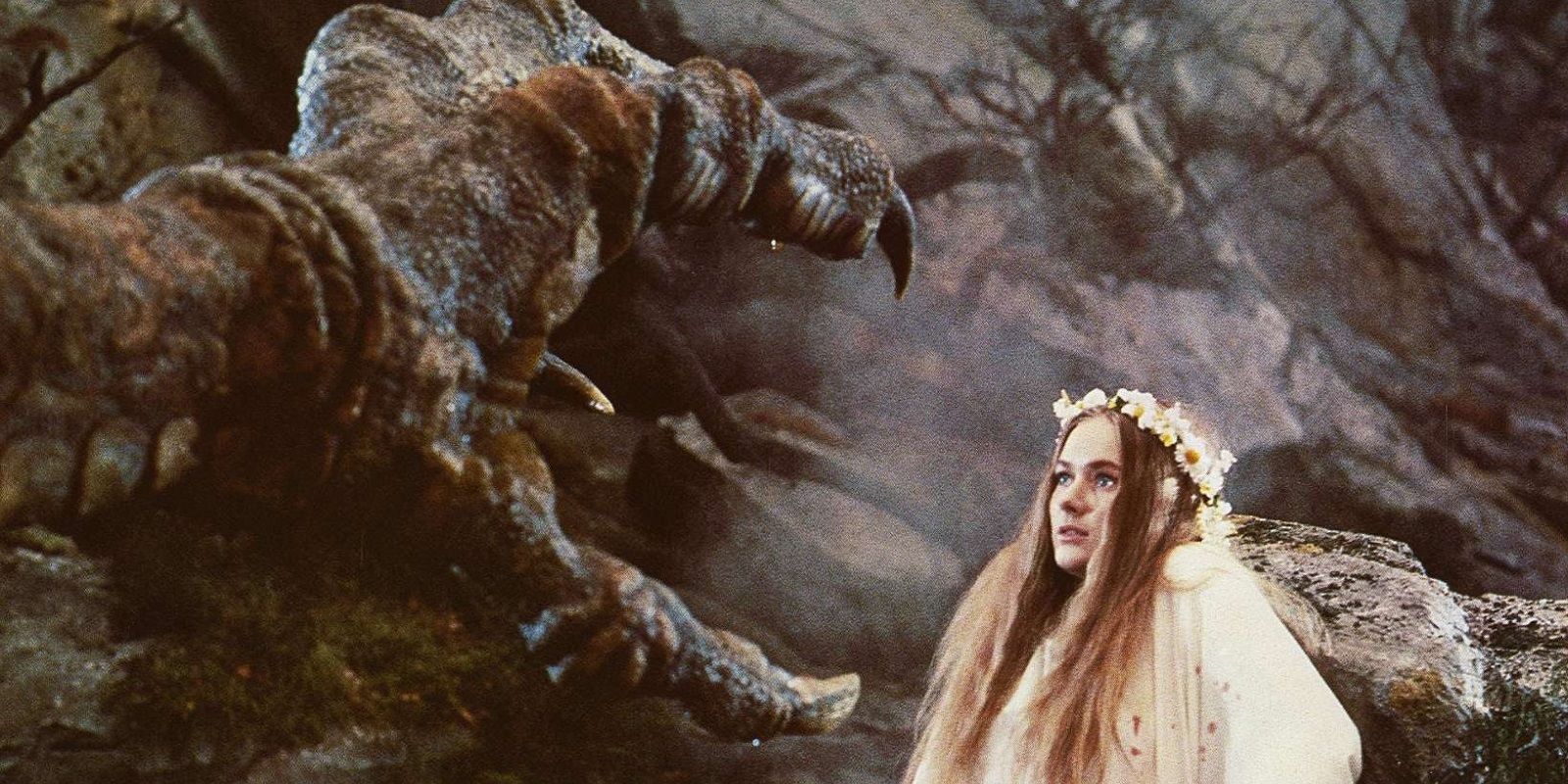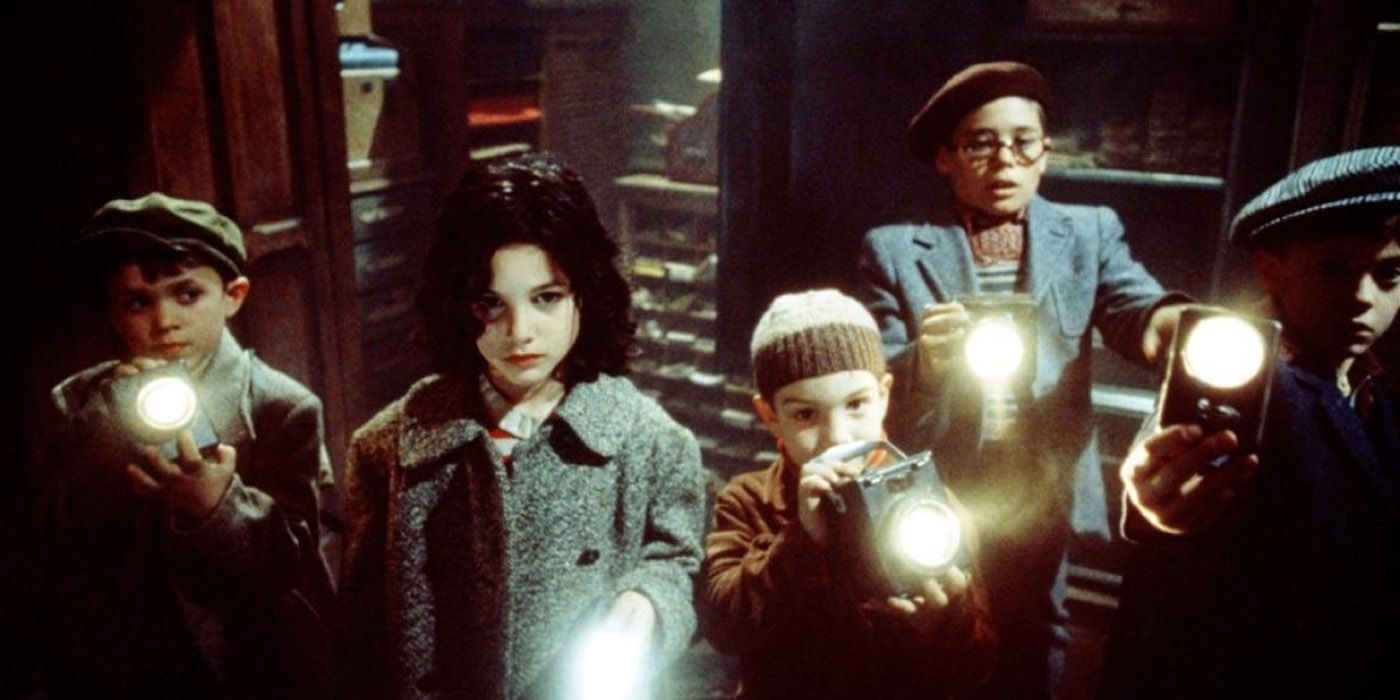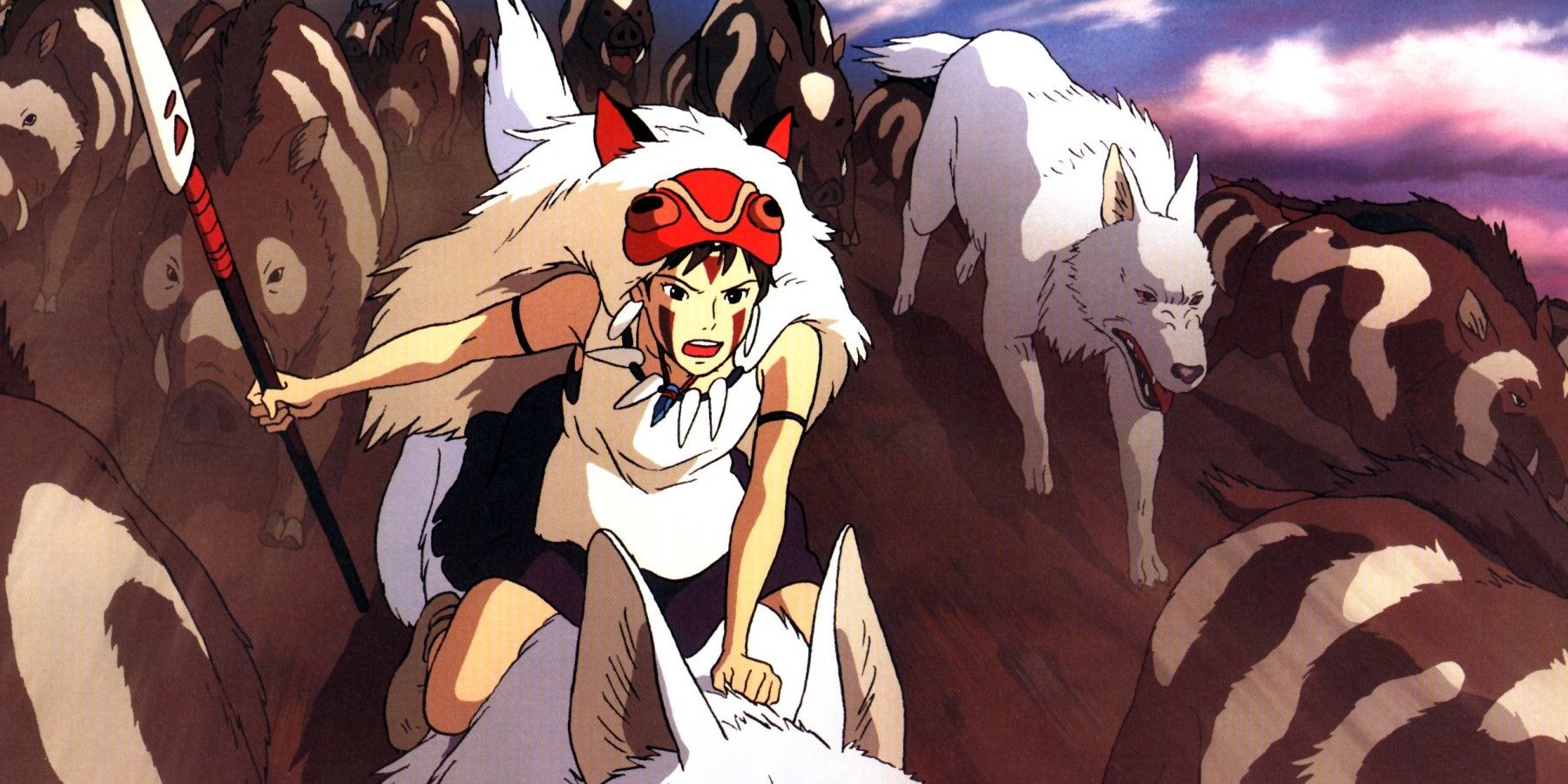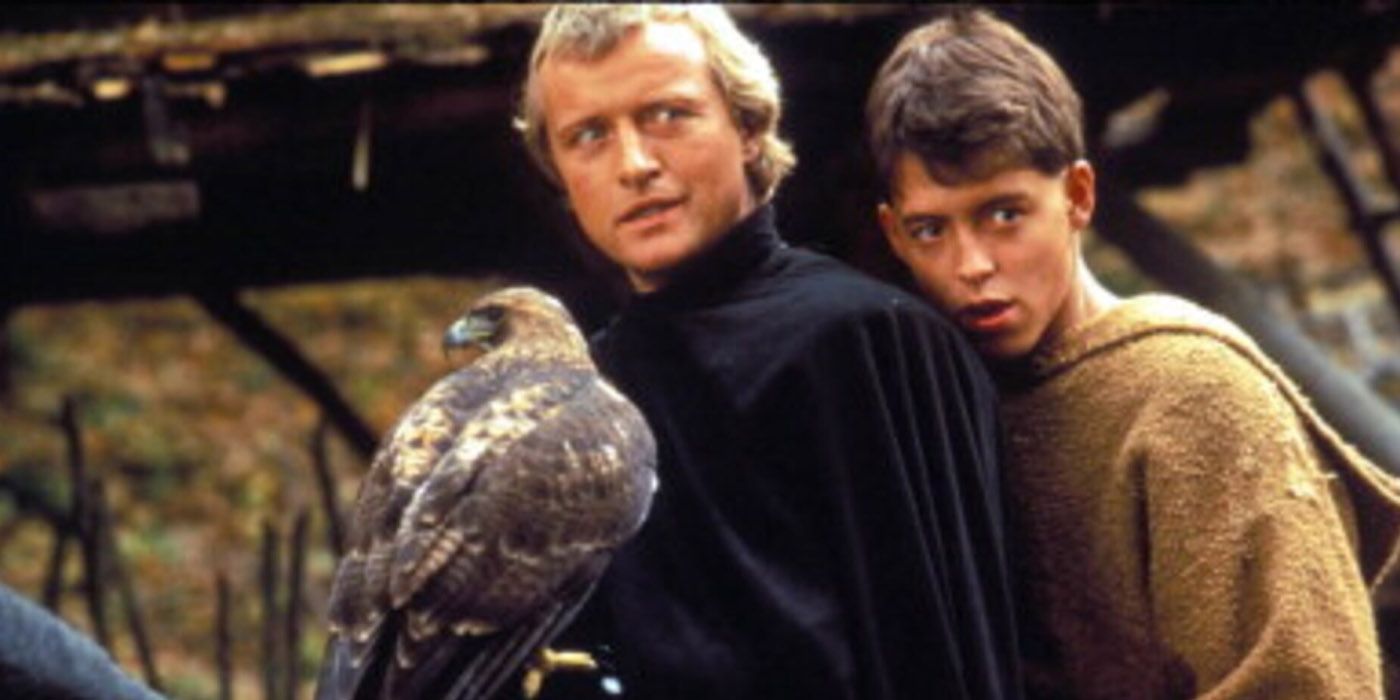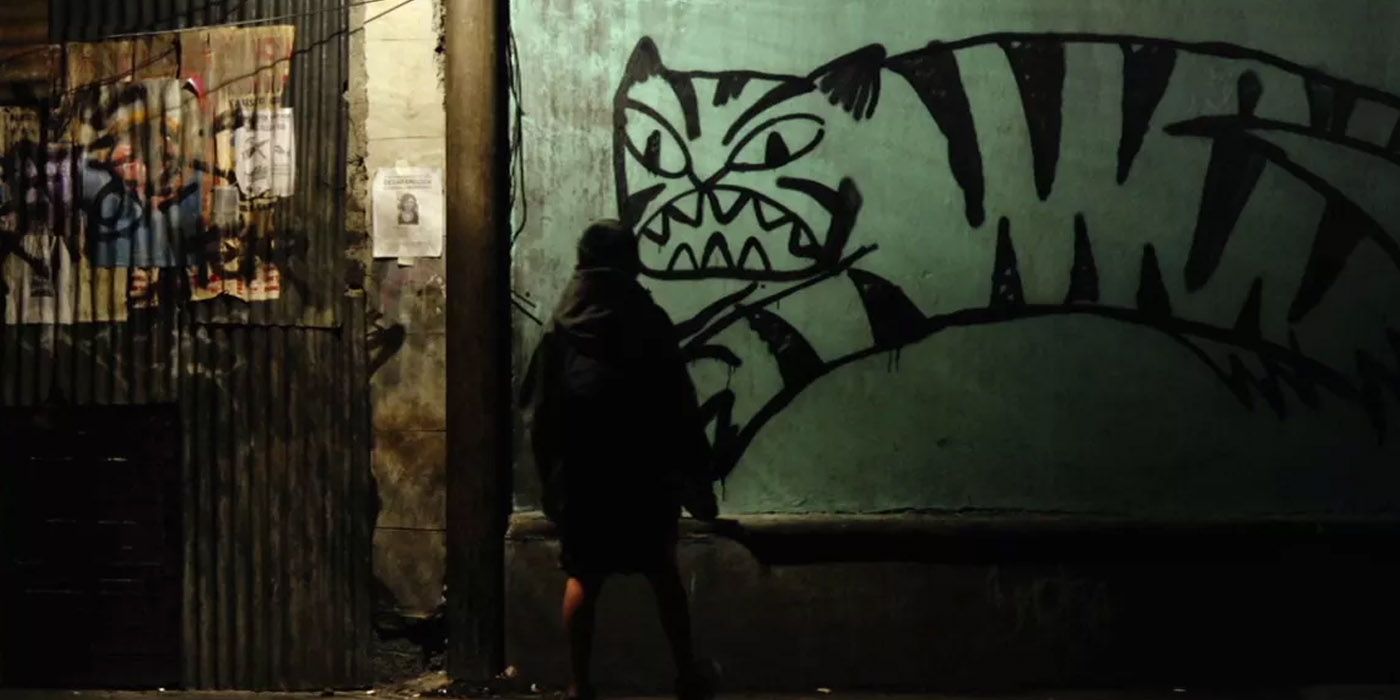As a genre, fantasy is an odd beast. The category is one defined by flexibility, as a story only needs to incorporate fantastical themes to qualify. This could be achieved through magic, the mythical, or supernatural. Despite sharing very little in common when it comes to setting, lore, or pacing, Lord of the Rings and Harry Potter both qualify as fantasy franchises.
While fantasy could entail practically anything, the genre is still somewhat of an acquired taste. If the more mainstream fantasy movies failed to tickle your fancy, perhaps these ten overlooked or forgotten masterpieces will hit the spot!
The Witches (1990)
Based on a Roald Dahl novel, The Witches is a delicious piece of dark fantasy with a biting sense of humor. Starring Anjelica Huston as a delightfully unapologetic witch who cannot stand children, 1990's film mainly takes place at a hotel where the annual convention for witches is taking place.
The hero - a child named Luke - learns about the witches' latest sinister plan to get rid of all the children in the world and sets out to put a stop to things. The road to success is paved with bubbly potions, mice, and Rowan Atkinsons. The Witches is a strange and occasionally grotesque movie, the latter chiefly credited to the Jim Henson Productions' fantastic puppets.
LA BELLE ET LA BÊTE (1946)
Due to being based on a popular story that has produced its fair share of film adaptations, 1946's La Belle et la Bête has somewhat faded from memory in recent years. Jean Cocteau's surreal film may not be the first project that comes into people's minds when they think of Belle and the Beast, but it is arguably the best.
Rightfully recognized as one of French cinema's greatest films, La Belle et la Bête epitomizes the idea of "show, don't tell." With minimalistic dialogue and atmospheric music, 1946's movie creates an eerie and dream-like state that perfectly reflects the source material's gothic and surreal roots.
The Adventures of Baron Munchausen (1988)
Do yourself a favor and watch every single film created by Terry Gilliam. Yes, that includes The Brothers Grimm and Tideland. The Monty Python alumni is a master of visual flare, even if the central narratives tend to not always be the easiest to appreciate. That said, The Adventures of Baron Munchausen is only surpassed by Brazil when it comes to Gilliam's most complete projects.
Set during the "Age of Reason," Baron Munchausen interrupts a play about his own life to correct any liberties taken by the creators. Opting to tell his "real" life story, the Baron recounts a tale so fantastical and absurd, it almost must be true.
Stardust (2007)
Admittedly, describing a film directed by Matthew Vaughn and starring Robert De Niro and Claire Danes as overlooked may seem a touch hyperbolic; yet, here we are. Adapted from a novel written by the always brilliant Neil Gaiman, Stardust is an energetic high fantasy flick filled with flamboyant characters portrayed entertainingly by accomplished performers, including an especially fun turn by Michelle Pfeiffer as an evil witch trying to reclaim her youth.
Stardust's plot is somewhat all over the place, but the film's real joy comes in the characters that are met along the way.
The Fall (2006)
With The Cell and Mirror Mirror to his name, Tarsem Singh specializes in the fantasy genre. Now, most of his projects are rather divisive, if not downright hated, but there is one exception: 2006's The Fall is nothing short of a masterpiece.
Similar to Pan's Labyrinth, The Fall's fantastical elements are only in the minds of the characters, in this case, they are based on a story being told by a bedridden stuntman to an imaginative nurse. While the "real" narrative is not quite as captivating as Guillermo del Toro's seminal film, The Fall boasts a gorgeous visual style that effectively makes the "fantasy" sections feel like a fairy tale brought to life.
Dragonslayer (1981)
In many ways, Dragonslayer is the quintessential medieval fantasy film. A kingdom is under siege from a massive fire-breathing dragon, prompting an ill-prepared young wizard to set out on a testing journey to slay the beast and save the princess. There are a couple of surprises along the way, but Dragonslayer puts the "generic" in generic fantasy films.
So, how is this movie a masterpiece? In truth, Dragonslayer is not a great film. The characters are bland and the story predictable, with the only undeniably positive being the special effects. Luckily, Dragonslayer boasts some of the best physical effects of all time, including the greatest dragon ever put to film.
The City of Lost Children (1995)
A couple of previous entries qualify as dark fantasy, but they tend to have a comedic edge that softens many of their gloomier moments. The City of Lost Children does not have this problem. A French film co-directed by Marc Caro and Jean-Pierre Jeunet, who had previously created the unsettling Delicatessen, The City of Lost Children tells the tale of a group of children who are caught by an entity (Krank) seeking to steal their dreams.
The plot primarily serves as an excuse to showcase the stunning special effects that bring to life a haunting rig that is the main location explored throughout the majority of the film. While the story could have been executed better, rarely has a fantasy film reveled in the ghastly and nightmarish as intensely as The City of Lost Children.
Princess Mononoke (1997)
Alternatively, Princess Mononoke can be replaced by any other film created by Hayao Miyazaki. The legendary anime director helped establish Studio Ghibli as a pioneering animation studio, one arguably only rivaled by Disney. While they all take place in alternate realities or incorporate overtly fantastical imagery, Miyazaki's films are strongly rooted in historical, societal, and emotional discourse.
Expertly tackling themes relating to nature and human greed, Princess Mononoke is an excellent place to start for those seeking to dip their toes into the filmmaker's expansive filmography. 1997's anime has stunning animation, engrossing action, a time-less but interpretive message, and a score that is simply divine.
Ladyhawke (1985)
The '80s produced an array of medieval fantasy films that have been mostly forgotten, two of which were released in the same year. Legend is a mediocre film save by the inspired (or obvious) casting of Tim Curry as the Lord of Darkness; conversely, Ladyhawke is a far-better movie that lacks a standout character.
That is not to say the cast does a terrible job; in fact, Rutger Hauer, Matthew Broderick, and Michelle Pfeiffer all give fine performances. They are just somewhat restrained in their roles. Ladyhawke is considerably less camp than many of its contemporaries, which can be seen as a positive or a negative. Ladyhawke's individual parts are all solid, making this fantasy movie one of the most complete of the '80s.
Tigers Are Not Afraid (2017)
Tigers are Not Afraid should be deemed a must-watch for fans of magical realism, a style that depicts fantastical elements in a realistic tone. That said, 2017's film is far more grounded in reality than the subgenre's usual projects, as the fantasy elements are used to punctuate a heartwrenching narrative centering around a young girl trying to survive in a Mexican city caught in the middle of a drug war.
Tigers are Not Afraid is not an easy watch and never flinches in its goal to authentically capture the fear fostered by such a climate. Nevertheless, seek this modern masterpiece out.

